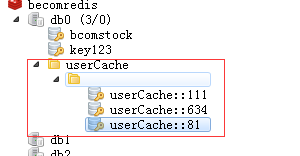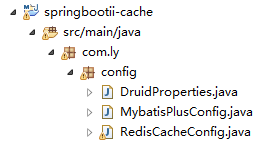springbootii-cache 基于注解的声明式缓存
测试版本springboo2.0.4
1、使用缓存注解
通用属性解释:
value属性:要使用缓存的名称
key属性:使用SpEL表达式自定义缓存Key,
例如:#name—以参数name作为自定义缓存Key,
#result.name—以返回值结果的name属性作为自定义缓存Key
(1)@Cacheable注解
如果没有缓存则会执行方法并将返回值缓存,如果有缓存时,不会执行方法而是直接返回缓存中的值
/** * cacheNames 设置缓存的值 * key:指定缓存的key,这是指参数id值。key可以使用spEl表达式 */ @Cacheable(value = "userCache", key = "#id", unless="#result == null") public User getById(int id) { logger.info("获取用户start..."); return userMapper.selectById(id); }

@Cacheable(value = "allUsersCache", unless = "#result.size() == 0") public List<User> getAllUsers() { logger.info("获取所有用户列表"); return userMapper.selectList(null); }
当返回的结果size == 0时 不缓存
(2)@CachePut注解
不管有没有缓存都会执行方法并将结果缓存起来
(3)@CacheEvict注解
移除指定缓存
/** * 创建用户,同时使用新的返回值的替换缓存中的值 * 创建用户后会将allUsersCache缓存全部清空 */ @Caching( put = {@CachePut(value = "userCache", key = "#user.id")}, evict = {@CacheEvict(value = "allUsersCache", allEntries = true)} ) public User createUser(User user) { logger.info("创建用户start..., user.id=" + user.getId()); userMapper.insert(user); return user; }
创建一个新用户会缓存,然后清空掉所有用户的缓存
注意:
a.User对象需要实现序列化接口
b.只有@CacheEvict注解的方法返回值可以为void
参考项目

参考:
https://my.oschina.net/u/3773384/blog/1795296




 浙公网安备 33010602011771号
浙公网安备 33010602011771号